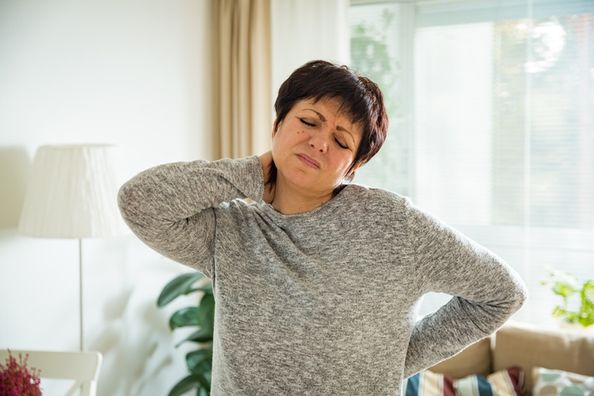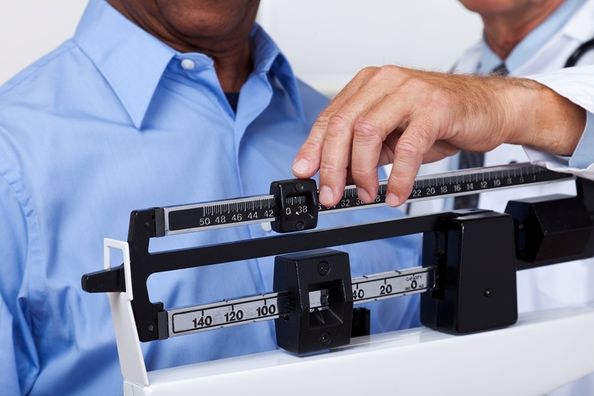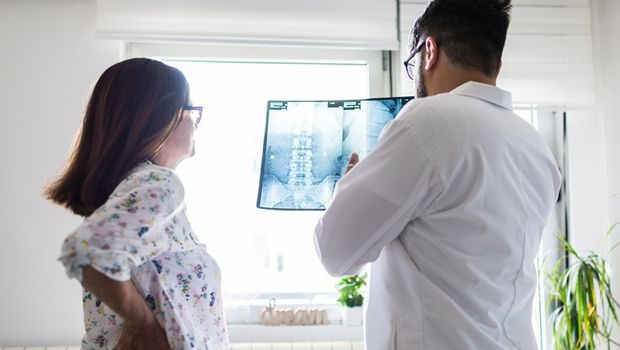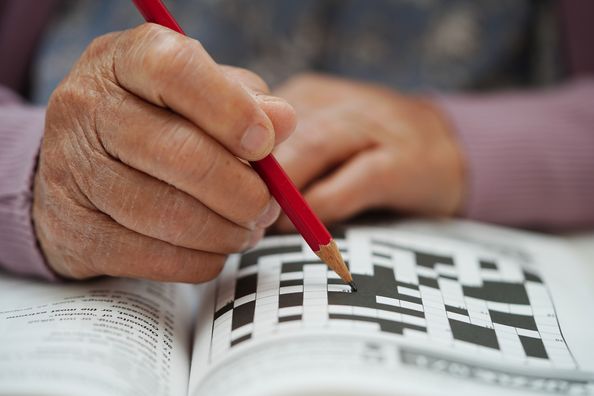Essentially, there are two factors that can cause issues to the spine as we age. The first is change in the structural integrity of the bone itself, otherwise known as bone mineral density. The second is wear and tear, or degeneration, of the various motion producing structures of the spine. While there are a variety of spine issues one may experience, these two types of conditions tend to make up the majority of medical issues that bring patients to their doctor.
Bone Health
When we talk about the integrity of the bone, we are referring to the bone’s mineral density. Bone mineral density determines the overall structure and strength of our bones, with denser bones indicating more strength. As bone loses density, it becomes increasingly porous, or weak and fragile. The more porous the bone, the more susceptible it becomes to fracture. Depending on the magnitude of density loss, a patient may be categorized as having normal bone density (acceptable porosity of bone), osteopenia (bone that is weaker than normal) or osteoporosis (very weak and fragile bone that is more easily fractured).
Osteopenia & Osteoporosis
While normal bone density levels are ideal for your health and safety, osteopenia and osteoporosis diagnoses are more common than you may think. In fact, 44 million Americans carry the diagnosis of osteopenia or osteoporosis, with two million Americans sustaining osteoporosis related fractures each year. Nearly half of these fractures occur in the spine, known as vertebral fractures. A greater number of women are affected by osteopenia and osteoporosis disproportionately compared to men, especially post-menopausal women as young as 50 years of age.
How This Affects the Spine
The unfortunate consequence of osteoporosis is that it puts you at risk of low-energy fractures, meaning something as little as a ground-level fall, or even a violent sneeze in the most severe cases, can cause a bone fracture. When osteoporosis related fractures occur, they can cause pain, deformity and neurological problems; you may even find that you are not as tall as you were previously or that you have developed a hump in your back.
Prevention/Management
Prevention goes a long way in keeping your bones safe and strong. To maintain healthy bone density, eat a balanced diet, exercise regularly, avoid smoking and alcohol and supplement your diet with vitamin D and calcium if needed. If you have low bone density, or believe you are at risk of developing osteopenia or osteoporosis, consult your physician to learn more about diagnosis and treatment.
The Degenerative Spine
Terms such as degenerative disc disease, spondylosis, arthritis, bulging discs and stenosis all describe findings commonly seen in an aging spine. The aging process of the spine results from multiple factors, including genetics, biochemical changes within the body, physical adaptations and the mechanical wear and tear resulting from simple use. When it comes to the aging spine, genetics plays an important role, as some people are more vulnerable to spine degeneration at an earlier age or at a faster rate than others. Often times, the effects of wear and tear do not warrant surgical intervention and treatment is not typically necessary until these changes cause pain.
How This Affects the Spine
Degeneration of the discs and/or individual joints can be potential sources of pain. Because degeneration rarely occurs in one spot, it can be difficult to pinpoint the specific joint or disc that is causing the pain. Additionally, due to the close proximity of our spinal discs and joints to the spinal cord and the various nerves which stem from it, structural changes may result in stenosis, the physical narrowing of the space which contains neurologic structures. Depending on the precise location, if this happens, the resulting compression of neurological structures may cause pain, numbness, tingling, and/or weakness in the arms or legs, balance and dexterity problems and changes in your bowel and bladder function.
Prevention/Management
While we’re currently unable to prevent the aging and degeneration of the spine, you may be able to avoid symptoms by maintaining a healthy and active lifestyle, normalizing your Body Mass Index (BMI), developing a strong core, practicing good posture, avoiding tobacco and alcohol use and utilizing safe lifting mechanics.
If you do develop symptoms, there are a variety of treatment options to consider. In the majority of cases, treatment is non-surgical and highly effective. However, in the few cases that do require surgical intervention, sophisticated techniques, including minimally invasive surgery, are available to successfully treat your condition.
The bottom line is you were given one spine and it has to last your lifetime. While there are certain things you can control, such as making healthy lifestyle changes, there are others you cannot. Stack the cards in your favor by better understanding the way your spine works and taking the necessary steps to help your spine age gracefully.
If you do experience spine problems, the Duly Health and Care Spine Surgeons have your back, offering leading-edge treatment techniques and quality spine care to address all of your needs. Click here for more information on spine health and conditions, or to schedule an appointment with one of our specialists.
Health Topics:







